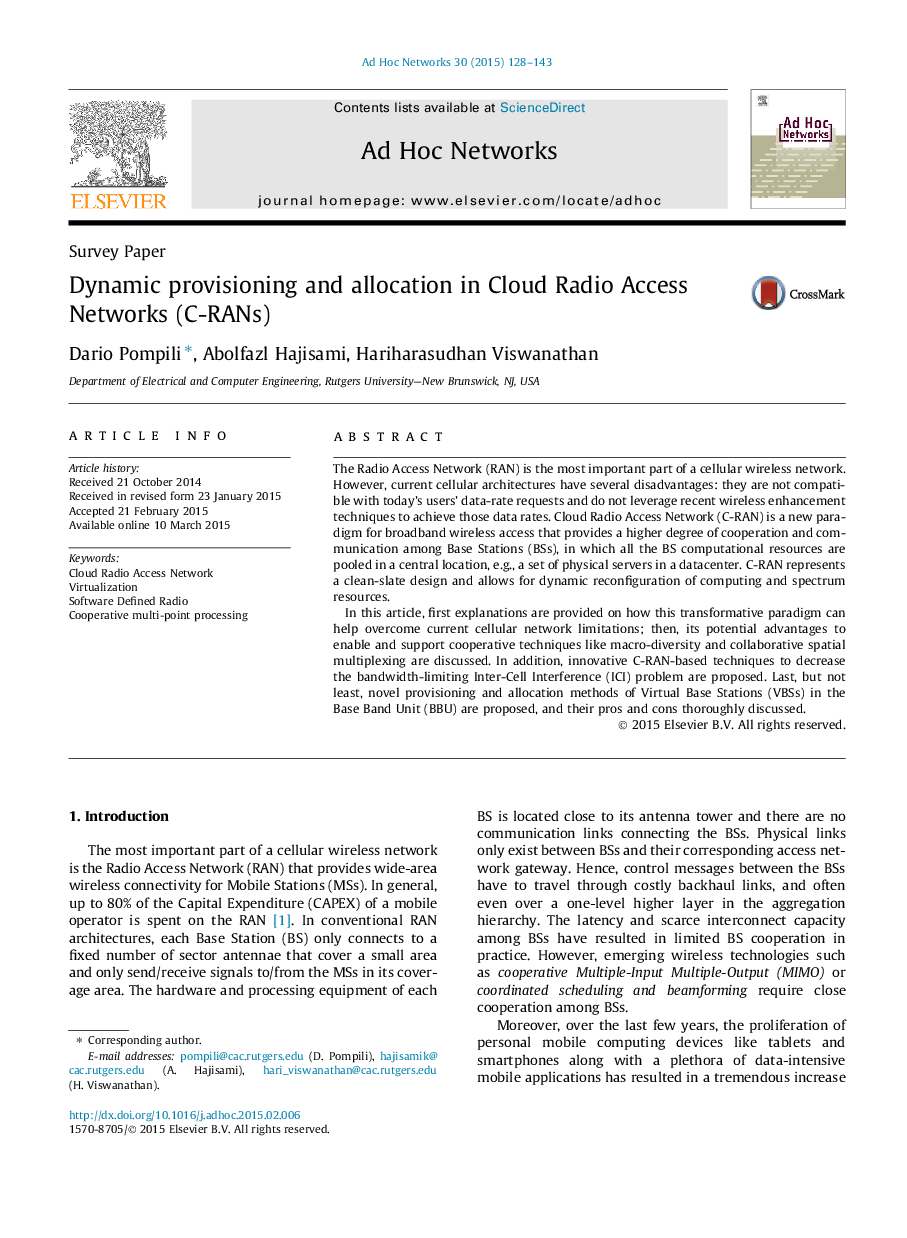| Article ID | Journal | Published Year | Pages | File Type |
|---|---|---|---|---|
| 445652 | Ad Hoc Networks | 2015 | 16 Pages |
The Radio Access Network (RAN) is the most important part of a cellular wireless network. However, current cellular architectures have several disadvantages: they are not compatible with today’s users’ data-rate requests and do not leverage recent wireless enhancement techniques to achieve those data rates. Cloud Radio Access Network (C-RAN) is a new paradigm for broadband wireless access that provides a higher degree of cooperation and communication among Base Stations (BSs), in which all the BS computational resources are pooled in a central location, e.g., a set of physical servers in a datacenter. C-RAN represents a clean-slate design and allows for dynamic reconfiguration of computing and spectrum resources.In this article, first explanations are provided on how this transformative paradigm can help overcome current cellular network limitations; then, its potential advantages to enable and support cooperative techniques like macro-diversity and collaborative spatial multiplexing are discussed. In addition, innovative C-RAN-based techniques to decrease the bandwidth-limiting Inter-Cell Interference (ICI) problem are proposed. Last, but not least, novel provisioning and allocation methods of Virtual Base Stations (VBSs) in the Base Band Unit (BBU) are proposed, and their pros and cons thoroughly discussed.
